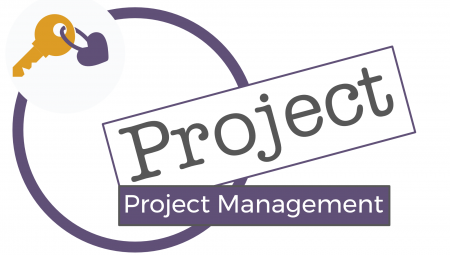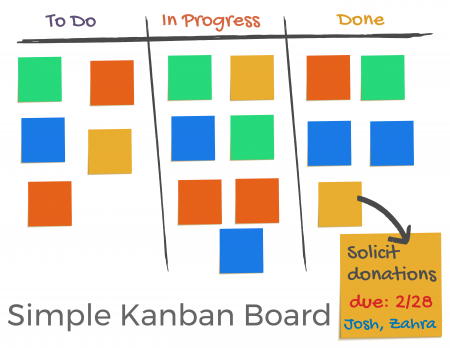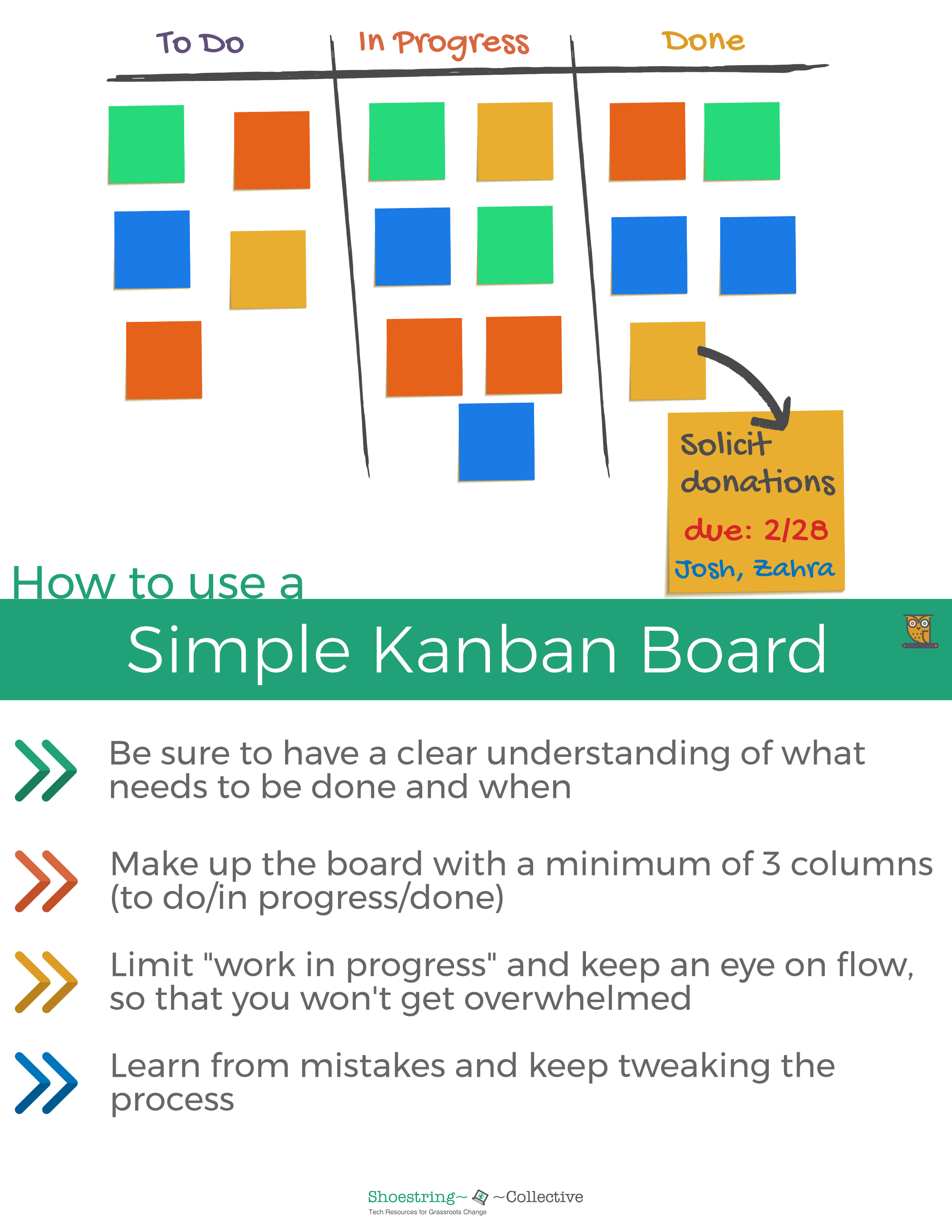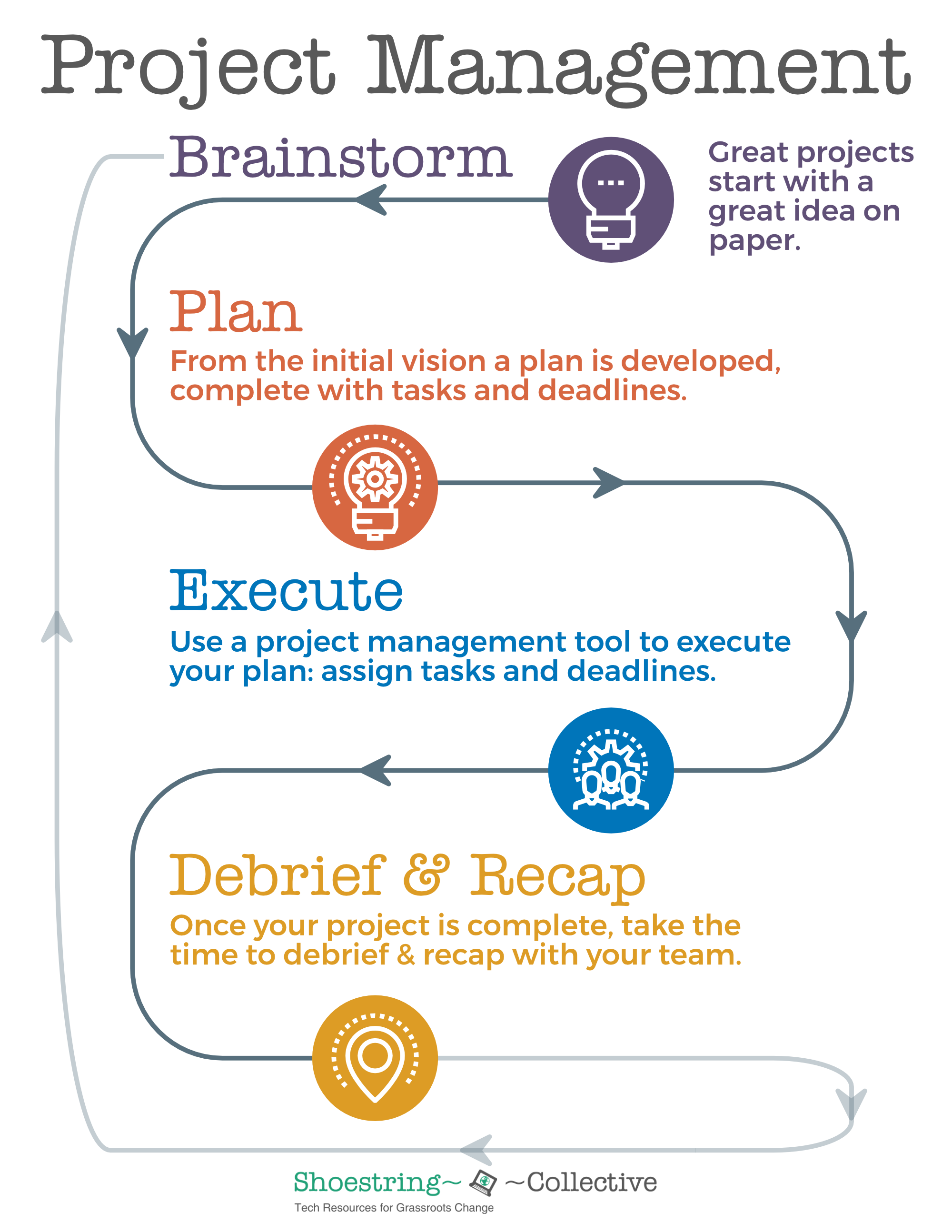 Some people are naturally great at organizing, be it organizing a space or running a project. They may not even think about any formal project management philosophies or methodologies – they just “get stuff done”.
Some people are naturally great at organizing, be it organizing a space or running a project. They may not even think about any formal project management philosophies or methodologies – they just “get stuff done”.
There are tons of project management philosophies out there, and they all have their place. Just to name a few: Scrum, Agile, Waterfall Method, Six Sigma, Kanban, and on and on and on. You don’t need to concern yourself with any of them, save one: Kanban. Why? Because Kanban is what most naturally reflects the way most people approach a project that does not require any specialized handling.
We will outline here how Kanban works in its simplest form, and how it can help you and your group to successfully complete a project.
A lot of projects fail because
- You feel overwhelmed right out of the gate. You don’t know where to start.
- Once you do get things underway, your brain feels like you have a million tabs open. You feel like you’re always switching from one task to another, struggling to focus on any one thing for long enough to make progress. You feel like you work nonstop, but are never as productive as you’d like to be.
- Your team struggles with basic communication, causing issues such as duplicate efforts, defects, rework, and more.
This is where Kanban comes in. Basically, Kanban (Japanese for “Visual Signal” or “Card”) is a visual way to structure your project, whatever it may be, and help you and your group visualize the progress of the tasks involved.
A simple Kanban board looks like this:

As in this visual, this is pretty much what you do: you write each task on a card or sticky note. We suggest as a minimum you include the WHAT, WHEN and WHO. If you want to, color-code them beyond what the card/sticky note already gives you. Either way, they all start out on the left under “To Do”, possibly ordered by due date and/or priority. From there they move to the right as appropriate.
Kanban has 4 principles:
- Visualize work: creating your board is the first step to this, but you can, for example, use red dots for items that are blockers, yellow ones for items that could become blockers etc.
- Limit work in progress: by limiting how much unfinished work is in process, you can reduce the time it takes for a task to move from “to do” to “done”. You can also avoid problems caused by task switching and reduce the need to constantly re-prioritize items.
- Focus on flow: this means nothing more that any tasks you put on the board should be seen through consistently from start to finish. It’s no use having something on the board as “to do” and then not really finish it.
- Continuous improvement: take note of what is going well and what isn’t going so well, and next time try to improve on it. Maybe the wrong people went to solicit donations, but they should have been organizing volunteers instead. Maybe you should have built in a time buffer to get the equipment. Etc. etc. etc. – there is always room to improve.
It really can be this simple.
You can make your Kanban board as intricate as you would like, or as appropriate. It can be organized in different ways. However, the most basic one is what you see here.
There are different online tools available which let you establish a Kanban board online, and these are what we will focus on in the respective section.
hidden for layout purposes


